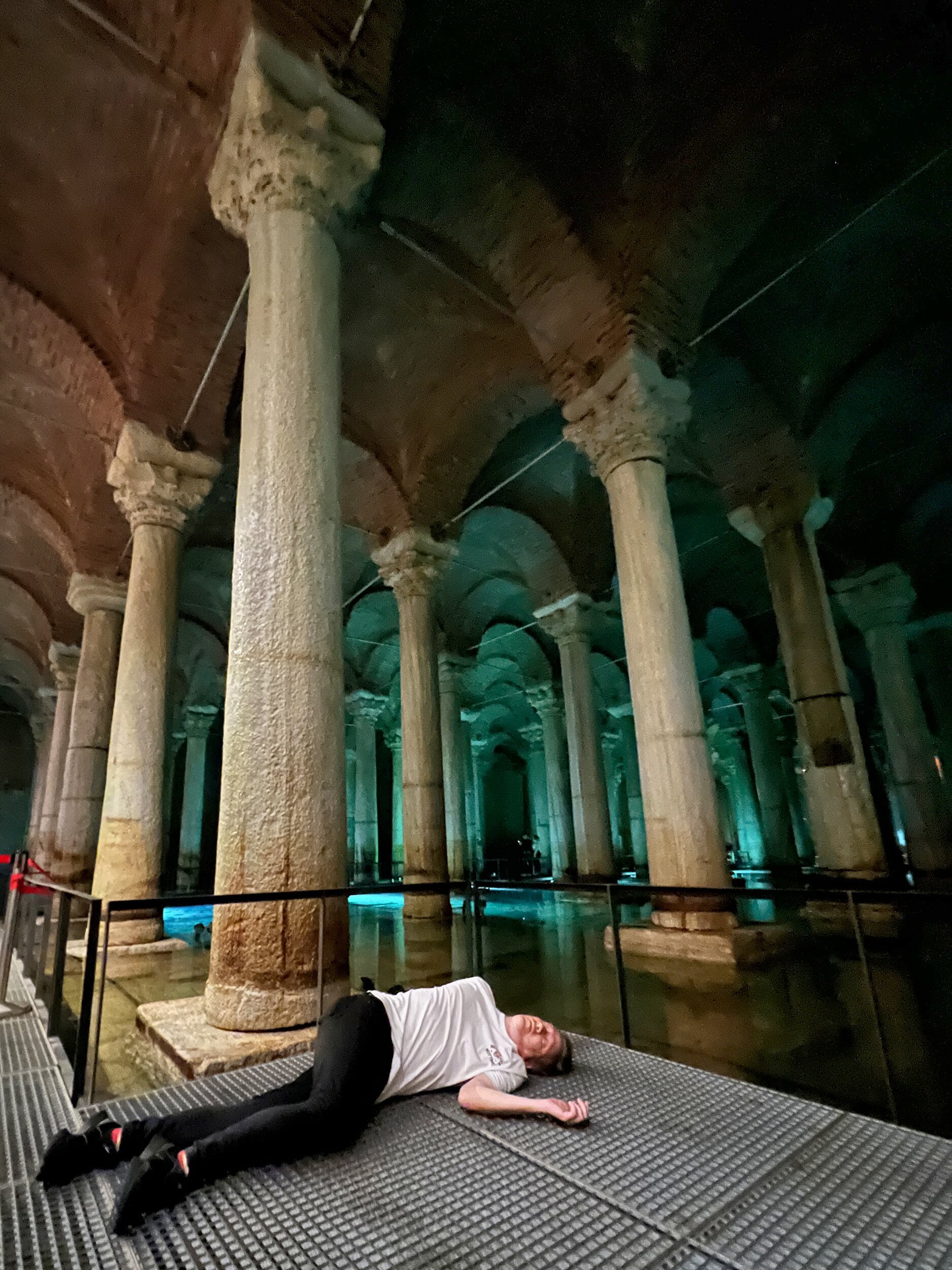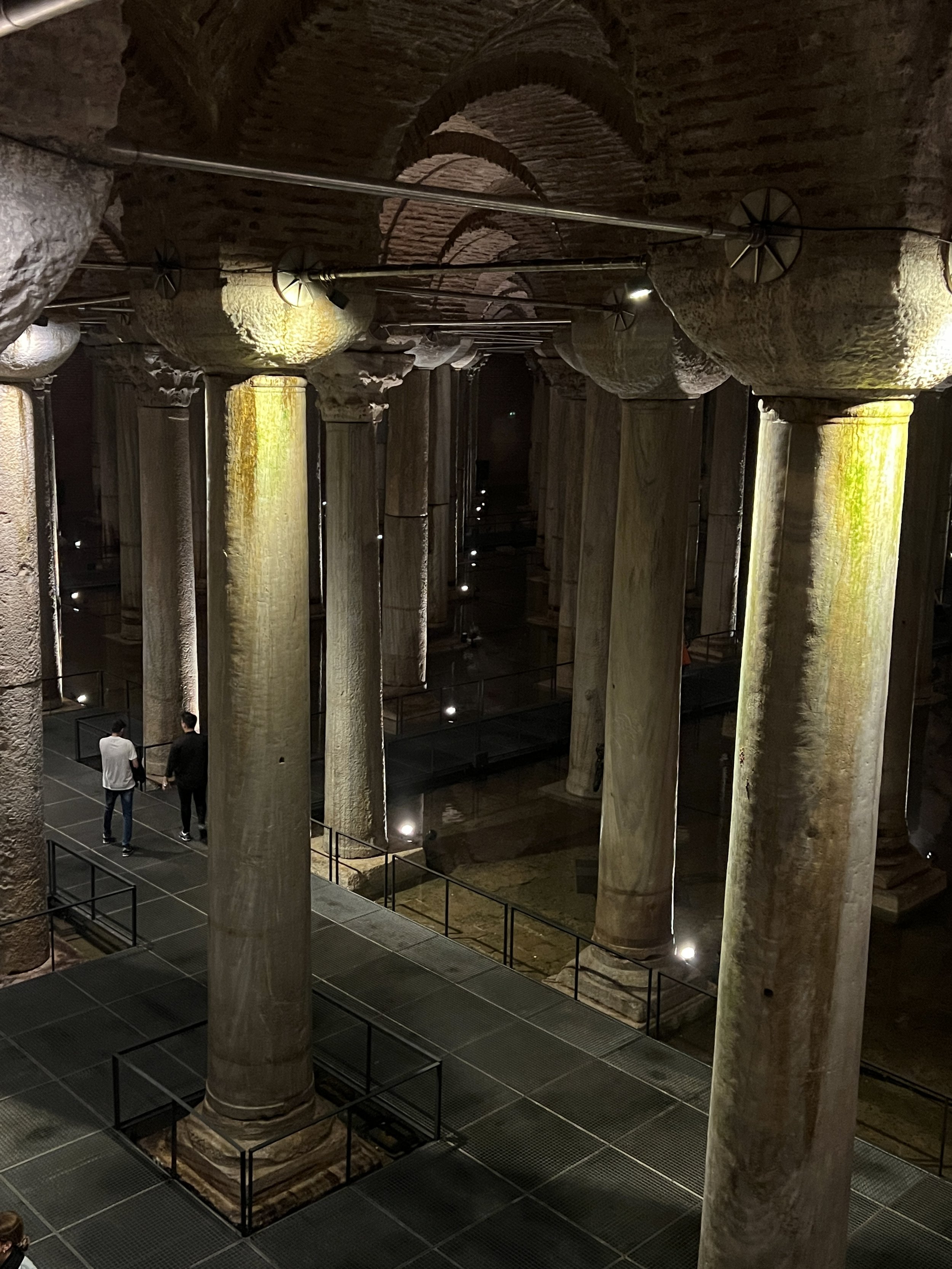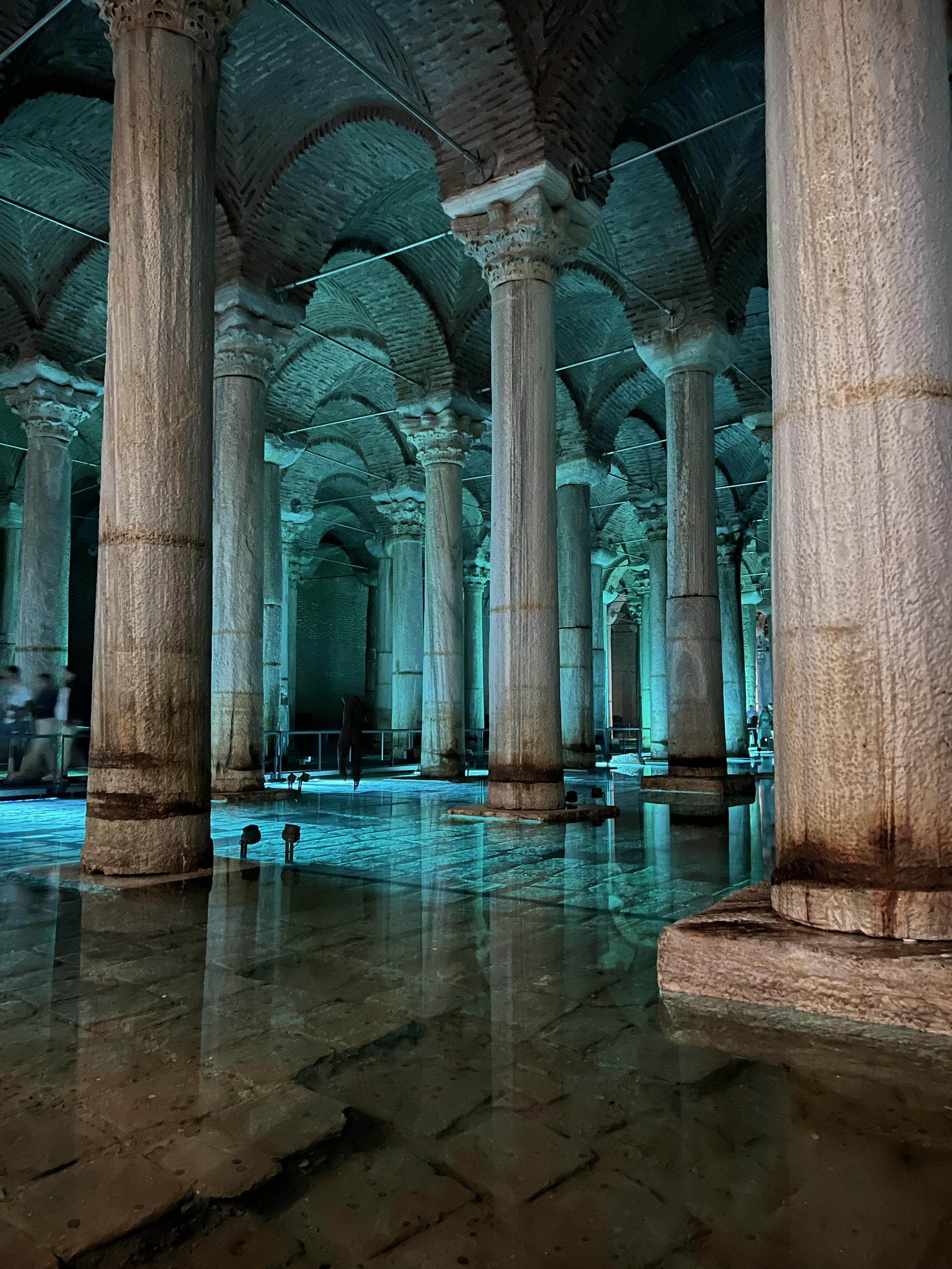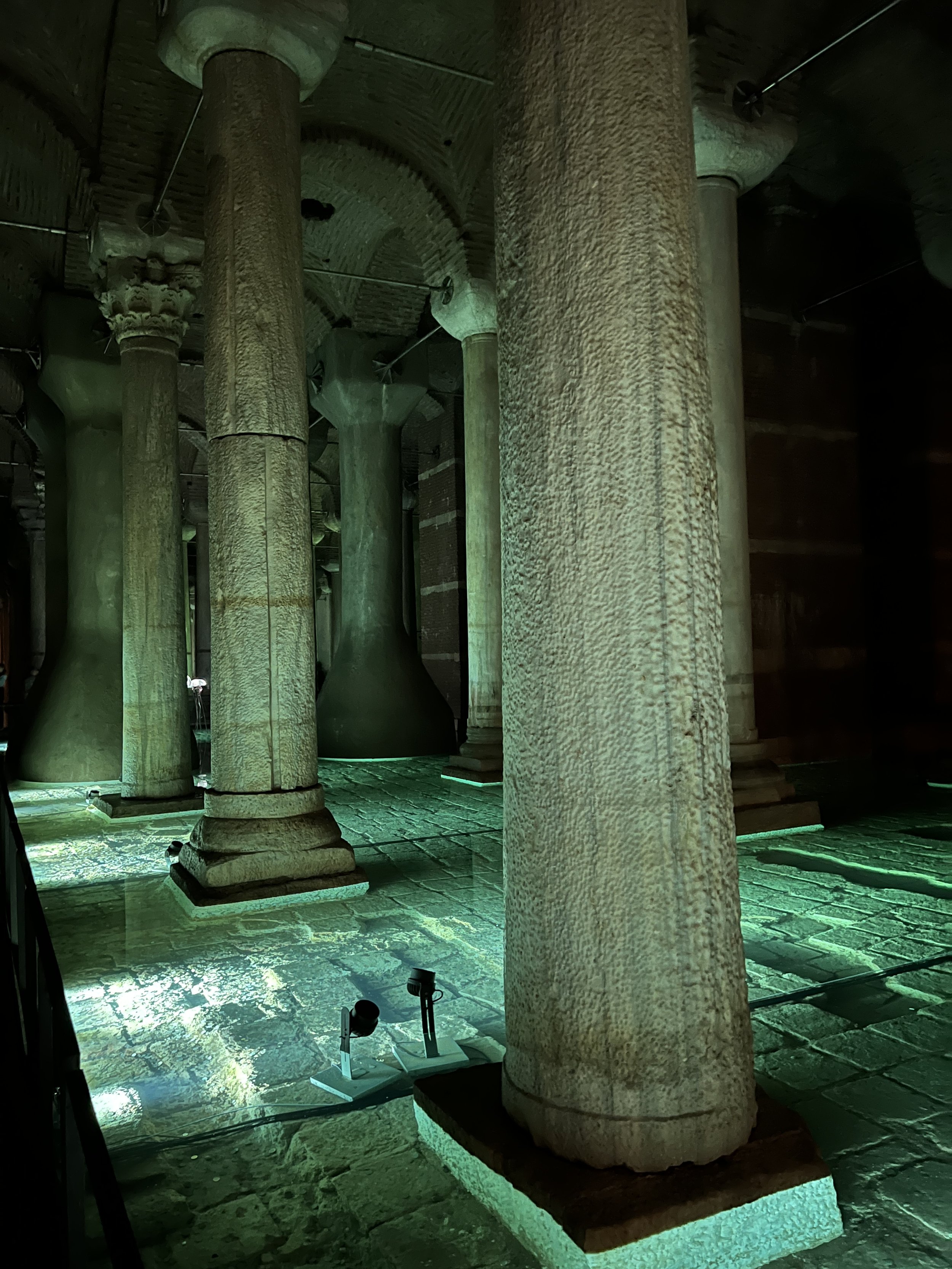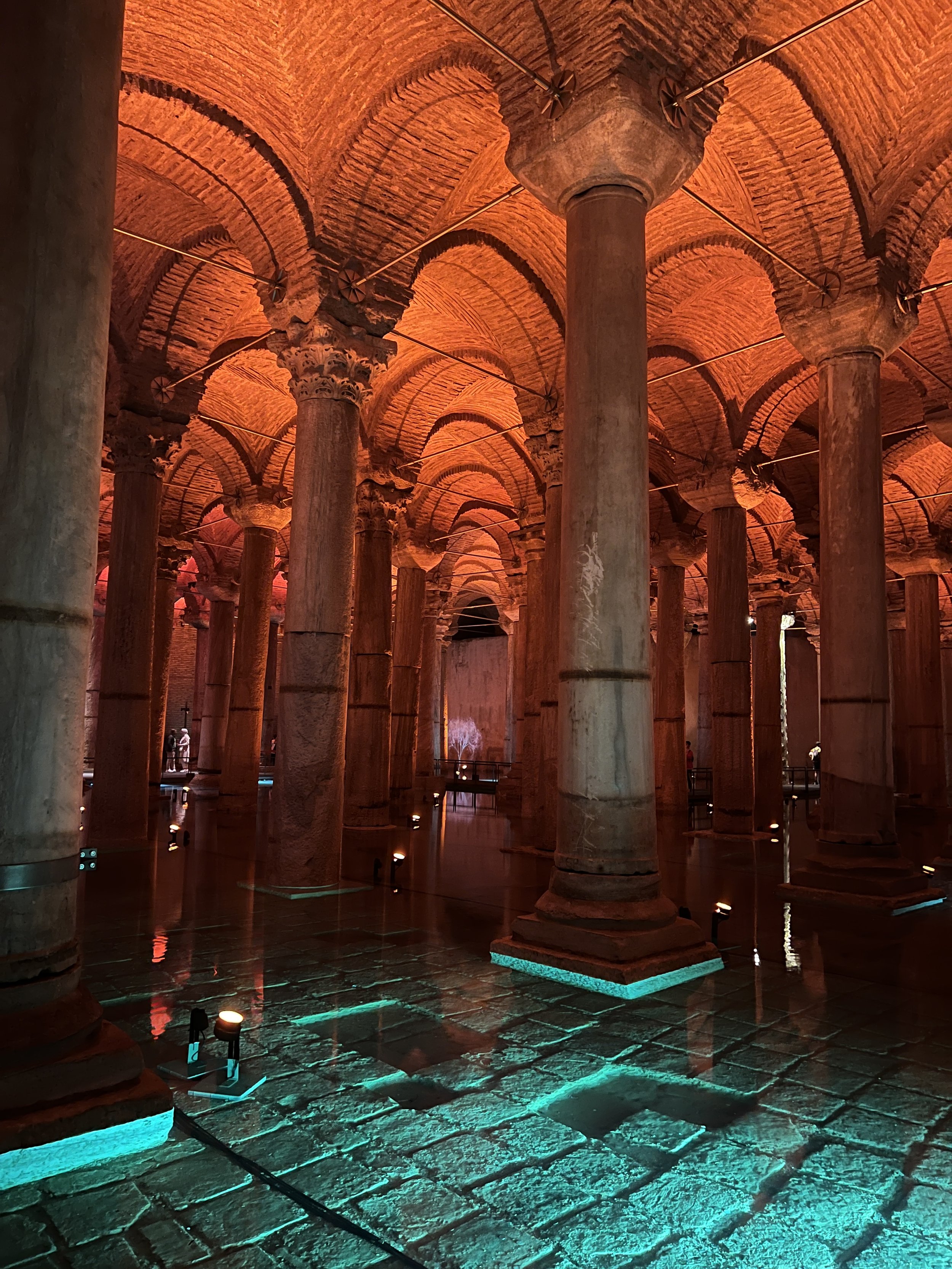Basilica Cistern
Istanbul's Basilica Cistern, a Byzantine marvel
The Basilica Cistern is one of Istanbul's most mesmerizing attractions, often overshadowed by the grandeur of the city's mosques and palaces, yet it holds an allure that is entirely its own. Built in the 6th century during the reign of Byzantine Emperor Justinian I, this underground water reservoir is an engineering marvel that showcases the sophistication of ancient Roman and Byzantine water systems.
Upon descending the 52-step stone staircase, visitors are greeted by the cool air and the soft sounds of dripping water, which set the atmosphere of this cavernous space. The cistern, capable of holding up to 80,000 cubic meters of water, is supported by 336 marble columns, each 9 meters high, arranged in 12 rows of 28 columns. These columns are a forest of marble, with bases and capitals showcasing a variety of styles, from Ionic to Corinthian, revealing the eclectic nature of reused materials from older structures.
The cistern's ceiling is braced by arches, adding to the grandeur and stability of this underground structure. The dimly lit ambience is accentuated by the uplit columns, creating reflections on the shallow water that still covers the floor, a vision that has earned it the nickname “Submerged Palace.”
Perhaps the most famous features of the Basilica Cistern are the two Medusa head column bases, positioned upside down and sideways, at the northwest corner of the cistern. Their origin remains a mystery, but their presence adds to the enchanting and somewhat eerie atmosphere. The Medusa heads are believed to have been brought to the cistern to negate the power of her gaze, a common practice in the ancient times.
UNESCO World Heritage Site
Part of The Historic Areas of Istanbul a World Heritage Site declared by UNESCO in 1985
